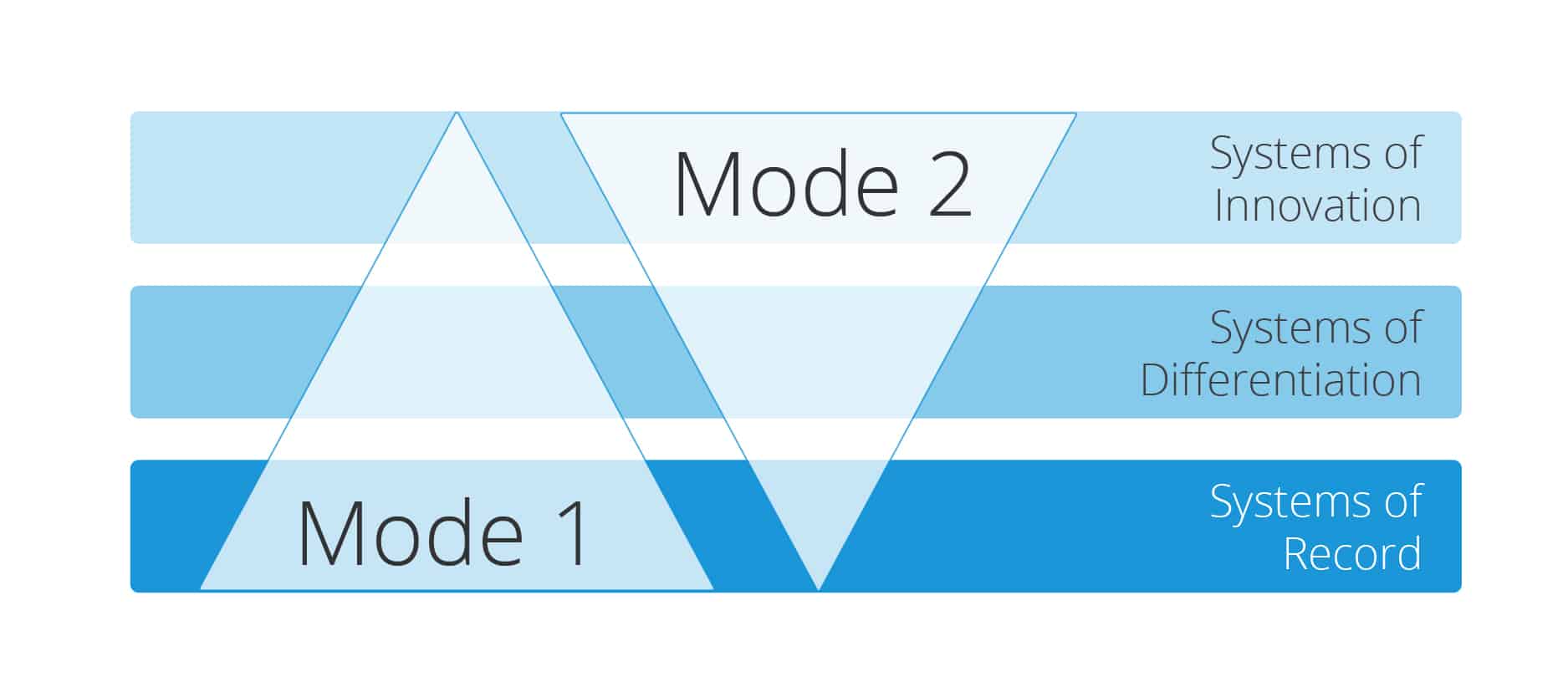What does bimodal IT mean?
Gartner Research’s bimodal IT framework recognizes that traditional development practices are no longer sufficient for organizations with growing enterprise application demand. Instead, the bimodal IT strategy calls for two parallel tracks that support rapid application development for digital innovation priorities, alongside existing application maintenance and operational stabilization projects.
Bimodal IT creates a rapid path for business application delivery
Digital innovation projects look significantly different from traditional application development projects. As such, a bimodal IT strategy helps categorize applications based on their value to the business, thus determining the right resources (or mode) for development and fast-tracking strategic business innovation projects.
- Characteristics for Mode 1: Development projects related to core system maintenance, stability or efficiency. These require highly specialized programmers and traditional, slow moving development cycles. There is little need for business involvement.
- Characteristics for Mode 2: Development projects that help innovate or differentiate the business. These require a high degree of business involvement, fast turnaround, and frequent update. Mode 2 requires a rapid path (or IT ‘fast lane’) to transform business ideas into applications.
By separating into two modes, IT teams can ensure that they have the right people, process, and technology to support business initiatives without impacting long-term maintenance projects. Mendix’s rapid application development platform is the ideal technology for your bimodal IT fast lane. Find out how you can speed innovation and drive toward better business outcomes.

A rapid path for your Bimodal IT strategy, from Mendix
Mendix’s low-code application development software creates a ‘fast lane’ within your bimodal IT strategy so that you can achieve your digital goals. Our platform augments existing IT efforts so that a separate cross-functional team of business and IT people can quickly test new digital ideas and iterate toward the perfect business solution, reducing risk on your team while keeping potential business impact high.
Our success stems from our signature visual modeling capabilities and business logic workflows that make it easy for business and IT groups to collaborate in a common language. There are three core components that contribute:
- Support across the entire application lifecycle enabling speed and agility throughout the design, build, deploy, iterate, and manage stages of the cycle.
- Abstraction from code enabling a wider variety of users with domain expertise to participate in the development process, increasing your developer population as well as their overall productivity.
- Collaboration tools enabling better project management and feedback cycles so that your projects stay on track and you deliver the highest-quality applications.
Learn more about Mendix and creating a fast lane using a rapid application development platform and how it fits within your bimodal IT strategy.

Frequently Asked Questions
-
What is Gartner’s Bimodal IT Mode 1 and Mode 2?
With Bimodal IT, Gartner recommends IT is split into two modes. Mode 1 refers to maintaining core systems key to an organization’s survival. whereas Mode 2 pursues digital innovation by pursuing transforming business ideas into applications.
-
How Should I Implement Bimodal IT?
Bimodal IT is often done by having two IT teams. One dedicated to maintaining legacy systems and core operations, while the other pursues digital transformation and innovation.
-
Bimodal IT vs DevOps?
While Bimodal IT splits IT teams into two, DevOps combines developers and operations to rapidly produce applications in an iterative manner. DevOps is structured in a way that matches Bimodal IT’s Mode 2 team.
-
What are Some Bimodal IT Tools?
Mendix is an example of a platform that offers many tools for Bimodal IT – excelling at the Mode 2 doctrine of a collaborative iterative rapid application development process.